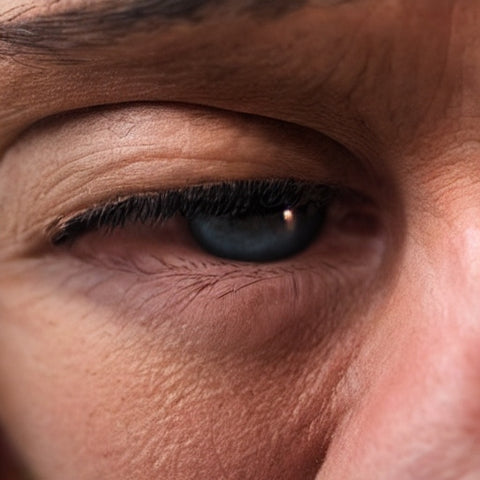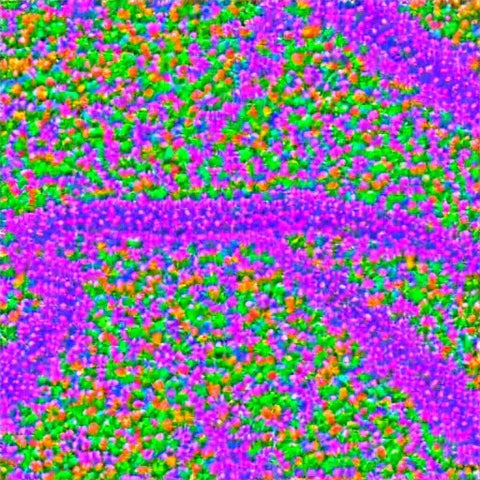What Can Cause A Headache
Indicators and Root Causes of Headaches
There are a few things you may do to cut down on the frequency and severity of your headaches. You should try to stay away from anything that can set off your triggers. These are some meals and beverages to avoid if you want to avoid getting a headache. You may also find out whether there is a history of headaches in your family or if your genetic makeup makes you more prone to developing headaches.
A headache may be brought on by a wide variety of various things, including the following:
- Dehydration: Headaches are a common symptom of dehydration, which occurs when the body does not get enough fluids.
- Insufficiency of sleep: If you don't get enough sleep, you can end up with a headache.
- Stress: Tension and stress may both contribute to the development of headaches.
- Emf Radiation: Excessive use of an emf emitting device has been know to cause headaches. It is suggested that emf clothing can help reduce frequencies.
- Caffeine withdrawal: If you are used to using caffeine and then abruptly quit, you may have a headache as a consequence of caffeine withdrawal. Caffeine withdrawal may last anywhere from a few hours to several days.
- Hormonal fluctuations: Headaches may be brought on by fluctuations in hormone levels, such as those that occur during menstruation or menopause.
- Eye strain: Staring at screens or other objects for lengthy periods of time may create eye strain, which can contribute to headaches in some people.
- Sinus congestion: Congestion in the sinuses may lead to headaches. Sinus congestion can lead to congestion in the sinuses.
- Certain drugs: It is possible for certain medications, such as those used to treat high blood pressure and birth control pills, to produce headaches as a negative side effect.
- Poor posture: Poor posture may lead to tension headaches. Poor posture can lead to tension headaches.
- Consumption of alcohol: Drinking alcohol might give you a headache, particularly if you're already dehydrated to begin with.
Headaches caused by excessive use of medication
Medication overuse headaches, also known as MOHs, occur when a person uses pain relievers for headaches more often than is suggested. There is a possibility that some medications are more prone to produce this kind of headache than others. Medications including morphine, acetaminophen, nonsteroidal anti-inflammatory drugs (NSAIDs), and ergotamines are the most prominent factors in this condition.
You should talk to your doctor about your prescription if you get headaches that come on often and last for a long time. You are free to discontinue the usage of the medications in question if your doctor concludes that your use of them is the root cause of the headaches. Even while it won't happen overnight, you should feel better and be able to avoid further episodes of those symptoms as a result of this treatment.

A drug overuse headache may be brought on by the majority of different kinds of medicines. It is advisable to be informed of the indications and symptoms in order to prevent this situation. Insomnia, sensitivity to light and sound, constipation, and nausea are all common symptoms of anxiety and depression. In addition to this, you need to strive to keep your fluid consumption at a high level.
You should take into consideration the possibility that you have MOH if you have a headache that does not improve after you stop using your prescription for it. If it keeps getting worse, you need to make an appointment with your doctor as soon as possible. Your physician will provide you with alternatives to traditional headache medication.
In addition to taking medicine, minimizing stress is another crucial component in the management of your disease. It is also recommended that you get enough of exercise and practice proper sleep hygiene. Biofeedback is another method that may be used to teach relaxation skills.
The good news is that drug overuse headaches can be effectively managed in the vast majority of patients. In point of fact, counseling and preventive drugs are able to alleviate the symptoms of this ailment in a sizeable portion of the people who suffer from it.
The three stages of a headache are called the premonition, prodromal, and resolution phases
A headache is a tricky little creature. The severity, location, and frequency of the symptoms might vary quite a little from person to person. Some individuals only suffer from headaches once each day, while others have to deal with them many times on a daily basis. If your headache is severe, you should probably seek medical attention as soon as possible. You should be aware of a number of factors, one of which is that a migraine episode consists of three parts.
The first stage is the era of premonition. This stage might begin anywhere from a few minutes to a few hours before the pain really starts. It is characterized by changes in behavior and a somewhat psychedelic state of mind, in addition to effects on the senses and the motor system.
The prodromal phase is not quite as well characterized as the other phases. It may last anywhere from a few hours to several days, although it is most likely to occur during the first few of days following an assault. It can continue anywhere from a few hours to several days. For instance, the first symptoms of a migraine typically appear about one hour after an initial trigger, however the first symptoms of a provoked attack might appear as early as two hours after the original trigger. The last step is the resolution phase, which often takes the most time out of the three. This phase lasts for an average of around 24 hours, although it may sometimes last for as long as 72 hours.

The different stages of a migraine attack have been the subject of investigation in a number of research. Only twenty-one (or 75% of the total) looked at the prodromal phase, whilst the remaining researchers looked at the other two stages. In most cases, researchers employed either a retrospective or a mixed methodologies approach in their investigations. The majority of research, on the other hand, were affected by some kind of recollection bias.
Electromagnetic Sensitivity and the Struggle with Headaches
Electromagnetic hypersensitivity, often known as EHS, is a disease that may result in headaches as well as other symptoms related to your health. There is some speculation that electromagnetic fields are to blame for EHS; however, the scientific community has not presented conclusive data about how EMFs bring on these symptoms. There is a possibility that a number of things are involved, such as pollution in the environment, stress, and changes in hormone levels. A burning, tingling, or hurting feeling in the head, neck, or eyes is often one of the symptoms. Other symptoms include: In most cases, the symptoms grow more severe when a person is exposed to a higher level of electromagnetic fields (EMFs).
When a person with EHS gets rid of the things that set off their reactions, they may find that their symptoms improve. If you suffer from migraines on a regular basis, for instance, you should steer clear of using mobile phones. In the event that you do own one, stow it away and take it to a separate room. In addition, you may defend your property by putting up curtains, painting it, or using a shield. A portable personal safety apparatus is another option that is used by some individuals.
Since the 1970s, scientists have been looking at the impact that electromagnetic fields have on living things. However, there is still room for further development in this subject. Studies have indicated that there is an association between exposure to EMFs and headaches; however, the source of the headaches is unknown at this time. In addition, the signs and symptoms of electromagnetic hypersensitivity (EHS) are non-specific, which means that one need not necessarily be exposed to electromagnetic fields in order to experience them.
Research will be required more often in the future since there will be an increasing number of wireless gadgets on the market. Researchers will have a better understanding of how electromagnetic fields (EMFs) influence the human body. Animals have been employed as models in a great number of research, however the results of these studies cannot be extrapolated to human health. A recent research indicated that those who used mobile phones had a greater chance of experiencing migraines. This may point to a connection between the usage of mobile phones and the onset of somatic problems, such as headaches, disturbed sleep, tinnitus, and hearing loss.
One other theory is that exposure to EMFs may result in the development of tension headaches. According to the findings of one piece of research, being exposed to RF-EMF might have an effect on the regional cerebral cellular blood flow. It is perhaps possible that it will impact the oscillatory responses of the brain. A burning feeling in the head, tinnitus, cardiac arrhythmia, and muscular soreness are all possible symptoms of electromagnetic hypersensitivity (EHS).
The breakdown of the blood-brain barrier is another factor that may contribute to headaches brought on by electromagnetic fields (EMF). The blood-brain barrier of a person breaks broken when they are exposed to powerful electromagnetic field emitters like mobile phones. This allows electromagnetic radiation to enter the brain of the individual. Migraines may not pose a danger to a person's life, but the condition can be debilitating and difficult to cure.

EMFs have been linked to a wide variety of illnesses, including migraines, as well as other frequent complaints. They have the potential to make one tired, interrupt one's sleep, and interfere with one's ability to concentrate. People who want to prevent these issues can either make use of shields or position their appliances at a greater distance. And if they have children, they should be sure to keep those youngsters away from any gadgets that use electricity.
A person's degree of exposure to radiation from mobile phones was shown to have a small but significant link with the number of headaches they had on a weekly basis, according to the findings of one research. Users who were in the top decile for weekly call time reported experiencing headaches somewhat more often. On the other hand, there did not seem to be any discernible pattern in the number of headaches.
Migraine accompanied with an aura
A migraine with aura is a neurological condition that may cause symptoms to manifest in the areas of vision, movement, and sensation. The duration of a normal aura ranges from five to sixty minutes, and it is always followed by a headache. Blind spots, speech problems, tingling, aphasia, and nausea are some of the symptoms that are associated with this condition.
A stroke may be preceded by symptoms known as an aura. It is critical for a person who is experiencing an aura to get medical attention as soon as they can after the occurrence. It is important that you discuss your concerns about these symptoms with your primary care physician.
There is a correlation between migraines with aura and an increased likelihood of having an ischemic stroke. Despite this, the evidence is not entirely convincing. The research is still being done, but there has to be more of it.

Ischemic strokes make for 87 percent of all strokes that occur in the United States. The danger is greatest among the younger members of the population. A number of studies have hypothesized that the changes in blood vessel size and shape that accompany migraines may be to blame for the higher rate of strokes that have been seen in this group.
Even while the majority of patients are able to recover from their migraine, some people are left disabled for a much longer period of time. If you have been suffering the symptoms of a migraine together with an aura, you should make an appointment to see your primary care physician as soon as possible.
A migraine that is accompanied by aura is a condition that may be both painful and disabling. A diagnosis may assist in determining whether or not you have an underlying ailment, which can then direct the treatment that is administered.
The aura is often accompanied by symptoms such as nausea, vomiting, photophobia, and headaches. There are also certain symptoms that occur less often, such as a throbbing or pulsing feeling in the area.
Pain in the sinuses
A sinus headache is a kind of head discomfort that is brought on by pressure that builds up in the paranasal sinuses, which are the hollow spaces that may be found around the nose and the eyes. When these sinuses are clear, they enable air to enter the nose; however, if they get clogged, they may induce a headache that is excruciatingly unpleasant.
If you are complaining of headaches in your sinuses, your physician may consider using an endoscope to look within your sinuses. Additionally, he or she will check your face and will inquire as to whether you are experiencing any symptoms. The physician will then be able to rule out the possibility of any other reasons of the headache.

Anything that obstructs the sinuses might lead to the painful condition known as a sinus headache. In most cases, a bacterial infection is the root cause of these obstructions. However, some allergens might also enhance the likelihood that you will suffer from a headache in the sinuses.
If you have a fever in addition to your headache, particularly if the headache has persisted for more than a few days, you may have a headache that is caused by your sinuses. Visit your primary care physician as soon as you can if you also have a fever along with your sinus headache.
Headaches, face discomfort, and stuffy noses are some of the symptoms of this condition. Your primary care physician should be able to diagnose the source of your sinus headache and provide treatment with antibiotics or a nasal spray that contains corticosteroid.
People who have compromised immune systems are more likely to suffer from recurrent headaches in the sinuses. The medical term for this illness is chronic sinusitis. Although a sinus headache may develop even in the absence of a cold, the common cold is the most common trigger for it.
In more severe situations, your doctor may suggest that you have surgery to have some of the tissue in your sinuses removed. In functional endoscopic sinus surgery, a tiny balloon is inflated and placed into the afflicted region before the procedure begins.
Food and drink triggers
There are a lot of different things that might be causing your headaches. To our good fortune, some of them are subject to our command. Your diet is one of these things. Migraines may be avoided by maintaining a diet that is both nutritious and balanced. On the other hand, some meals and beverages are known to bring on episodes.
Even though there is no conclusive evidence that certain foods directly trigger migraines, it is a good idea to investigate the possibility. For instance, one research found that persons who consumed a lot of fresh fruit had a lower risk of suffering from migraine headaches.
If you want to avoid getting migraines, you should try to maintain a consistent level of blood sugar by eating many small meals throughout the day. In addition, you should drink enough of water to avoid being dehydrated. A diet that includes liquids that contain caffeine, such as coffee, is another option for preventing headaches.

In a similar vein, a recent research revealed that use of alcohol is a prevalent factor in the onset of migraines. More than three quarters of the people the researchers investigated admitted to having drunk alcohol at some time in their lives. This was one of the findings of the study. This held true for the dark wine as well.
According to the findings of the same research, numerous types of alcoholic drinks included the least quantity of caffeine, which is well recognized as a factor that might bring on headaches. In addition, several of the beverages had additional components, such as preservatives based on sulfate. People who take a lot of caffeine may get headache symptoms as a result of this.
The following list, which is not intended to be an exhaustive research, offers some suggestions:
In addition to consuming large amounts of water, you should also make an effort to be vigilant about other possible triggers, including foods and beverages. Before you make a purchase, it is important to inspect the labels and study the contents of the food package.
Genealogy and the study of families
When screening a kid for episodic headaches, a family history of headaches is commonly emphasized as a factor to consider. The identification of the hereditary factors that contribute to headaches can assist your healthcare practitioner in arriving at an educated conclusion about the most appropriate method of therapy.
According to statistics provided by the American Migraine Foundation, around fifty percent of people who suffer from migraines have a history of the disorder in their families. Those who do not have a family history of migraines are at a lower risk than those who do, while those who have a family history of migraines in either one or both parents have a greater risk.
Researchers have improved their understanding of the genetics behind migraines via the use of gene identification and polygenic risk score research. It has been shown that migraines are caused by many different genes. On the other hand, it is not known for certain whether or not a single gene is sufficient to bring on a migraine.

The etiology of migraines is complicated and is not only determined by genes. The progression of the illness may also be attributed to factors in the surrounding environment.
The most recent research looked at how having a history of migraines in the family relates to having them more often. It was discovered that a greater family history of migraine was related to a younger age at the commencement of the first migraine attack as well as a higher number of days per month spent on medication to treat the condition.
Even though there has been a lot of study done on the subject, many parts of what causes migraines are still a mystery. New research is very necessary if we are going to expand our understanding of the underlying processes that cause migraines.
In addition, the results of a recent genome-wide association study (GWAS) have shown that there is a novel approach to identifying genes that have a role in the development of migraines.

































Leave a comment